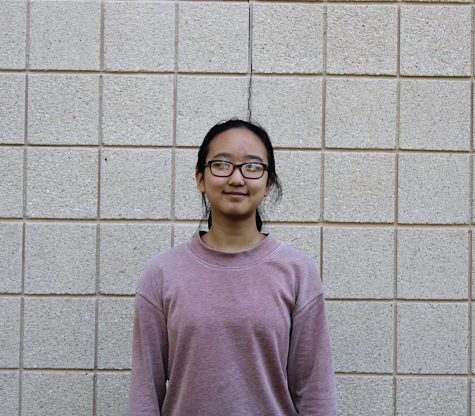COVID-19 and the Beginning of the School Year
At the close of the 2020-2021 school year, students across the country were hopeful that they would be returning to school in the fall with a greater sense of normalcy. Many did not anticipate having to wear masks or socially distance in the new school year. Yet, as mid-June rolled around and cases began to surge due to the highly contagious Delta variant, this image was altered. For public officials, school administrators, teachers, and families, the question of how to balance quality education and safety amidst the pandemic became increasingly pressing.
As schools in the US reopen for the new school year, several locations have already seen rapid rises in cases, particularly among students. In Georgia, 60% of COVID-19 case surges are taking place in K-12 schools. In Kansas City, Missouri, the Children’s Mercy Hospital is experiencing a rush of COVID-19 testing and is receiving more cases than ever before. During the final week of August, the number of weekly pediatric cases peaked since the onset of the pandemic.
In 35 states, over 1400 schools have opted to pursue virtual learning for the beginning of the year to keep students and faculty safe. Other schools have opted to require certain grade levels to remain virtual, while other grades return to the building to stagger the number of students in the building at a time. Still, other schools have pursued a hybrid or fully in-person approach for instruction.
School districts are constantly changing their policies and guidelines in an effort to adapt to variable local conditions. The wide range of approaches to the new school year, as well as the continuous shifting between the modes of instruction, reflect the uncertainty of the situation throughout the country.
Regardless of the choices that each school makes, there are universal guidelines that students are expected or suggested to follow. The Centers for Disease Control and Prevention (CDC) recommends students, school staff, and visitors to wear a mask indoors, regardless of vaccination status, as masking is one of the most effective prevention strategies. The CDC also urges all students to vaccinate, especially those participating in sports or other extracurricular activities. School districts are not allowed to require vaccinations; however, as vaccines have recently been approved by the Federal Drug Administration, schools are able to advertise and recommend more people to vaccinate. Additionally, the CDC states that anyone, vaccinated or not, who has had contact with a suspected or confirmed COVID-19 infectee should be tested 3-5 days after exposure, even if no symptoms are apparent. The CDC recognizes the importance of in-person education and urges schools to make a safe return to this type of instruction.
Following this sentiment, Lower Merion School District is trying to make a full in-person return to learning per the recommendations of the CDC.
On September 9, 2021, all LMSD schools opened their doors for the first day of the new school year. To ensure a safe start to the year, guidelines and contingencies were put in place to maximize the safety of students and staff.
Before this, on August 31, 2021, the state of Pennsylvania issued a mask mandate for all Pennsylvania schools and childcare facilities, so Harriton announced that students would be expected to wear masks indoors. Likewise, students have been assigned seats in their classes per district policies for contact tracing. While students are asked to maintain 3 feet of social distance in the classrooms, during lunch they are urged to sit 6 feet apart while unmasked, as the school recognizes this as being the most vulnerable time of the day.
LMSD follows guidance from the Centers for Disease Control and Prevention (CDC), the Pennsylvania State Health Department, and the Montgomery County Office of Public Health to guide their health & safety plans. Additionally, the district has established the District Health & Safety Team which regularly meets to discuss updates related to COVID-19 and how to best maintain safety for the students and staff working in the building.
In making classroom experiences for students safer, the LMSD safety teams focused on a few specific points. One of these points was the ventilation system, which has been updated specifically for the pandemic. Harriton has a system known as MERV (Minimum Efficiency Reporting Values) 13, designed for more effective filtration in classrooms and large indoor spaces. The US Environmental Protection Agency (EPA) writes, “Filters with MERV-13 or higher ratings can trap smaller particles, including viruses.” The MERV-13 is the highest-rated HVAC filtration system available and the EPA indicates that the MERV-13 “could improve the system’s efficacy in removing viruses from circulated air.”
Harriton’s cleaning system has also been updated to better remove germs that could appear throughout the building. Along with cleaning high-touch surfaces multiple times a day and providing hand sanitizer stations throughout the building, Harriton employs electrostatic cleaning with vital oxide labeled as safe to use in the building for cleaning. According to the EPA, “Unlike conventional spraying methods, electrostatic sprayers apply a positive charge to liquid disinfectants as they pass through the nozzle. The positively charged disinfectant is attracted to negatively charged surfaces, which allows for efficient coating of hard nonporous surfaces.” This allows for a more thorough cleaning of what would typically be hard-to-reach surfaces in the building. This method is effective and efficient in cleaning large indoor spaces, like schools, and has only grown in popularity amidst the COVID-19 pandemic.
These are among many protocols put in place by the LMSD to create the most typical year possible in an atypical time for students and faculty. As long as the LMSD community adheres to the rules put in place by CDC and LMSD safety groups, the normalcy we are all hoping for may become a reality.

Quinn is a senior and is excited for his fourth year on the Harriton Banner, and his second year as editor of the Science & Tech section. Other than...

Hannah, a senior, is excited for her fourth year in the Harriton Banner! As a returning Science & Tech section editor, she is excited to continue reading...


